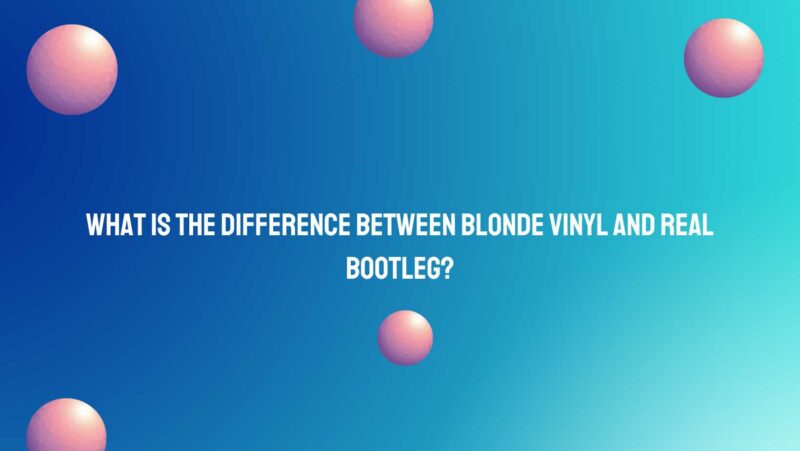In the world of music, collectors and enthusiasts often encounter a variety of rare and sought-after recordings, including “Blonde vinyl” and “real bootleg” recordings. These terms can be somewhat confusing, as they both refer to unique or unofficial releases of music. However, they represent distinct concepts within the realm of music collectibles. In this comprehensive article, we will explore the differences between Blonde vinyl and real bootleg recordings, shedding light on what makes each category unique.
Blonde Vinyl Records
Blonde vinyl, also known as colored or colored vinyl, refers to vinyl records that are pressed on vinyl of a non-standard color. Traditional vinyl records are typically black, but colored vinyl comes in a wide array of colors, ranging from translucent red and blue to gold and even multicolored variants. Blonde vinyl records have become popular among collectors for their visual appeal and the uniqueness they add to a record collection.
Characteristics of Blonde Vinyl:
- Visual Aesthetics: The primary attraction of blonde vinyl is its distinctive appearance. These records often have a translucent quality that allows light to shine through, creating a captivating visual effect when they spin on a turntable.
- Limited Editions: Many blonde vinyl releases are limited editions, making them highly collectible. Artists and record labels often use colored vinyl to create special or limited runs of albums to commemorate anniversaries, events, or promotions.
- Sound Quality: The sound quality of blonde vinyl is generally on par with traditional black vinyl. The color of the vinyl does not significantly affect the audio quality, as long as the manufacturing process is of high quality.
- Collectibility: Collectors often seek out blonde vinyl records for their rarity and visual appeal. These records can appreciate in value over time, particularly if they are associated with a popular artist or album.
Real Bootleg Recordings
Real bootleg recordings, on the other hand, refer to unauthorized and unofficial recordings of live performances, studio outtakes, or unreleased material by artists. Bootlegs have a long history in the music industry, dating back to the early days of vinyl records. They are typically produced and distributed without the consent or involvement of the artist or record label.
Characteristics of Real Bootleg Recordings:
- Unauthorized Releases: Bootleg recordings are produced without permission from the artists or copyright holders. They often capture live performances, unreleased tracks, or alternate versions of songs that were not intended for official release.
- Varied Sound Quality: Bootleg recordings vary widely in terms of sound quality. Some are professionally recorded, while others may be of lower fidelity, as they are often captured by audience members using portable recording equipment.
- Collectible for Rarity: Real bootlegs are highly sought after by collectors due to their rarity. Many of these recordings feature unique or unreleased material, making them valuable to fans and historians.
- Legal and Ethical Issues: The production and distribution of bootlegs are often considered illegal and unethical because they infringe upon copyright and intellectual property rights. Artists and record labels usually do not endorse or profit from bootleg releases.
Conclusion
In summary, blonde vinyl and real bootleg recordings are distinct categories within the realm of music collectibles. Blonde vinyl refers to vinyl records pressed on non-standard colored vinyl, prized for their visual aesthetics and collectibility. In contrast, real bootleg recordings are unauthorized and unofficial releases of live performances, studio outtakes, or unreleased material, highly valued for their rarity and historical significance.
It is important to note that while blonde vinyl is a legal and legitimate product offered by record labels, real bootleg recordings exist in a legal gray area and are often subject to copyright infringement claims. Collectors interested in bootlegs should exercise caution and be aware of the legal and ethical implications associated with these recordings. Ultimately, both blonde vinyl and real bootlegs contribute to the rich tapestry of music collectibles, offering unique pieces of musical history to dedicated enthusiasts.


